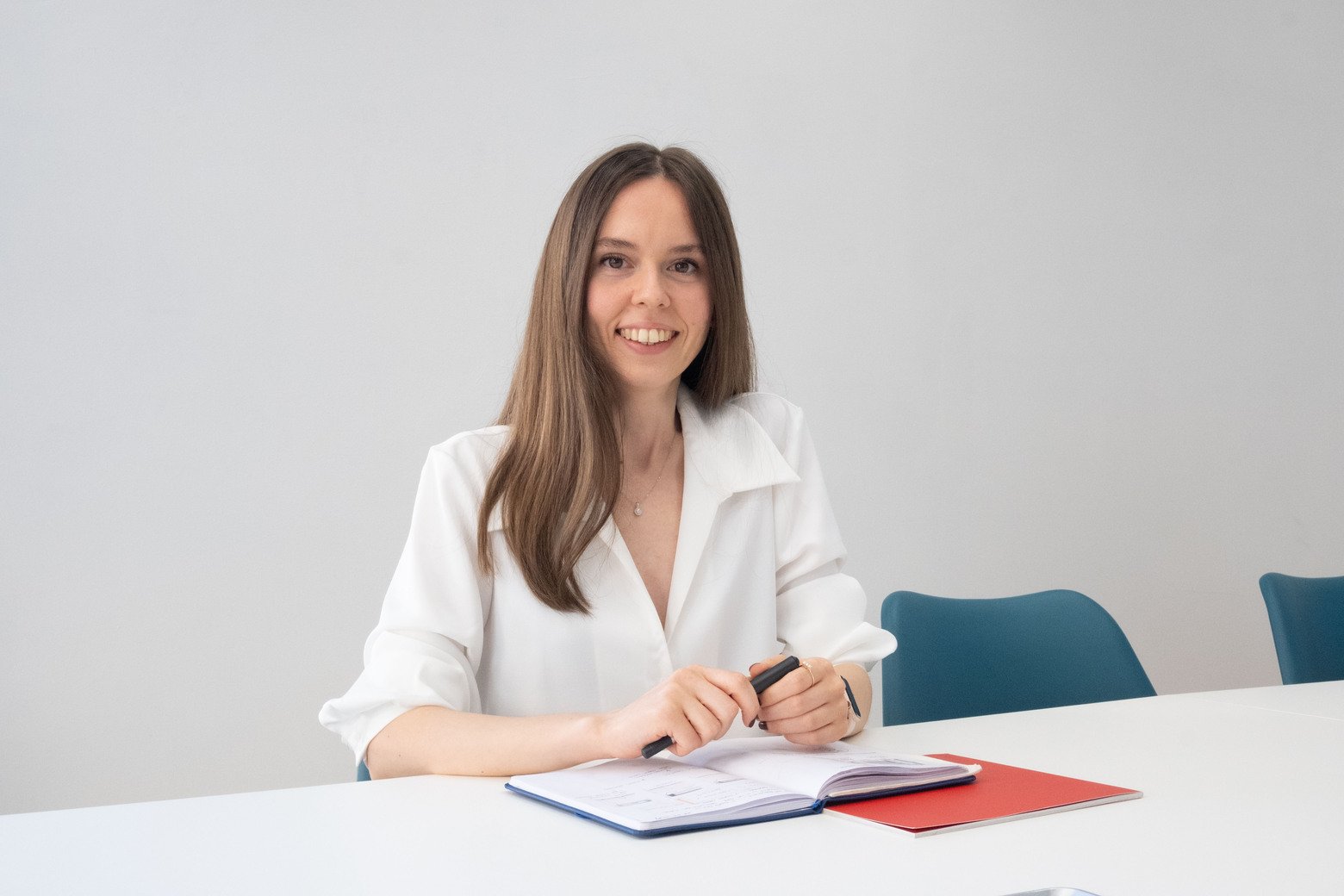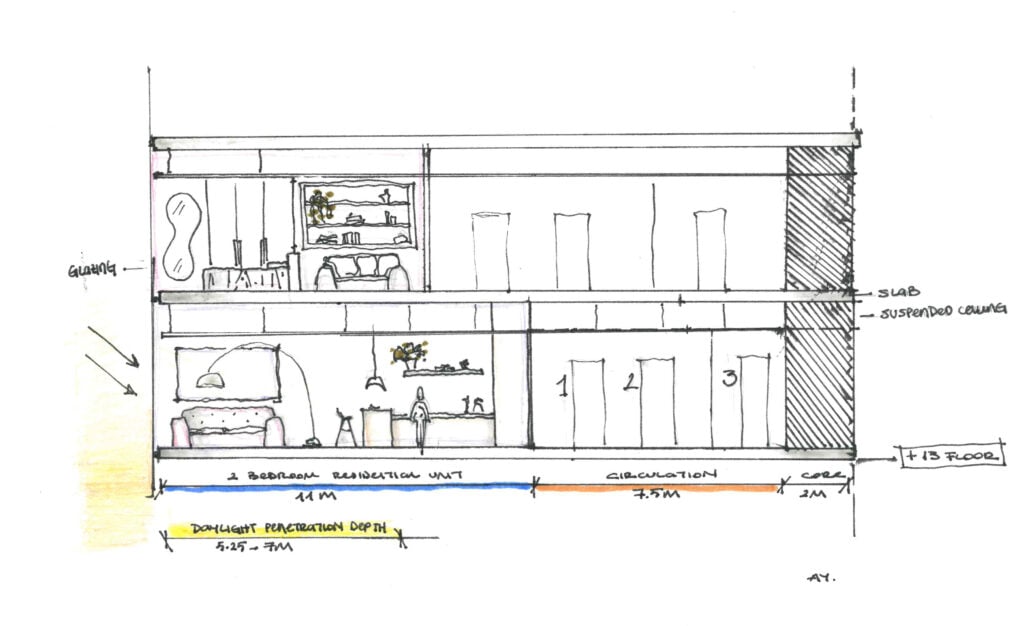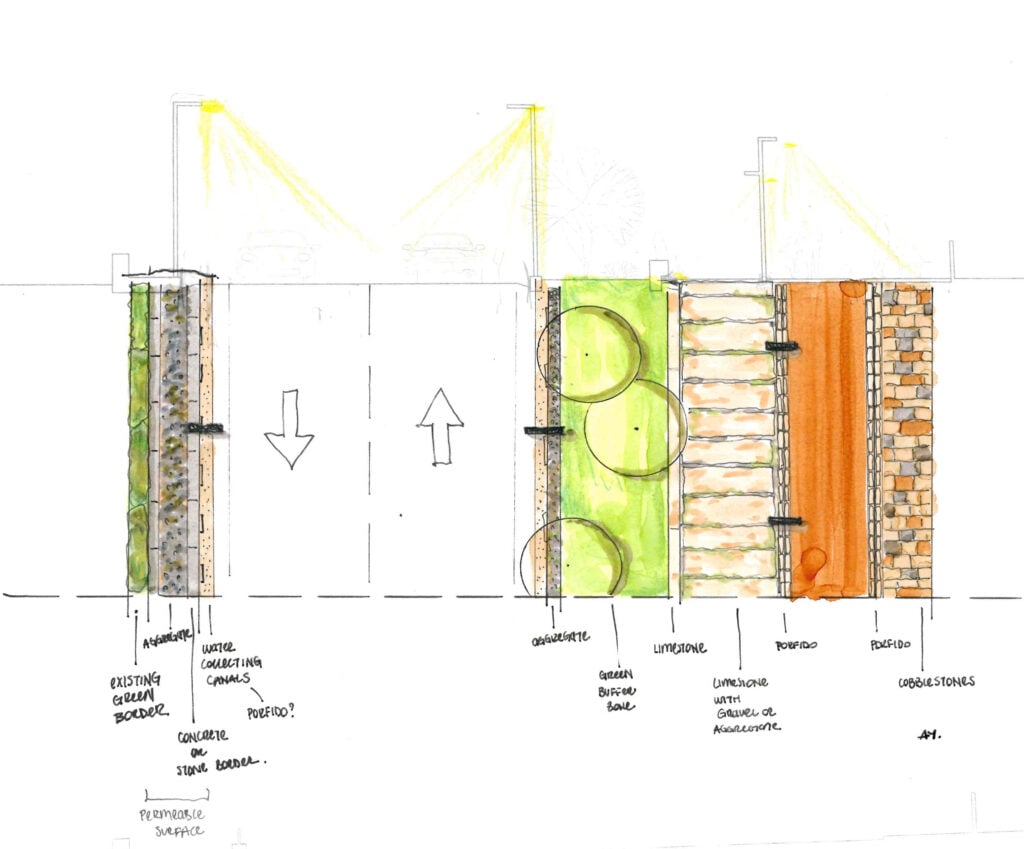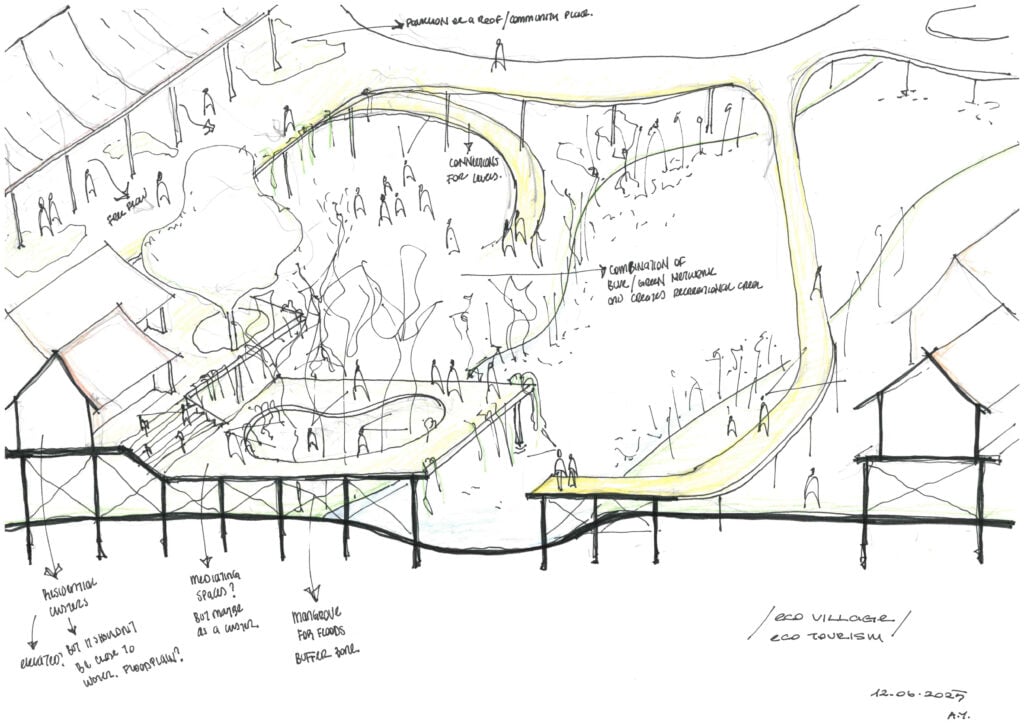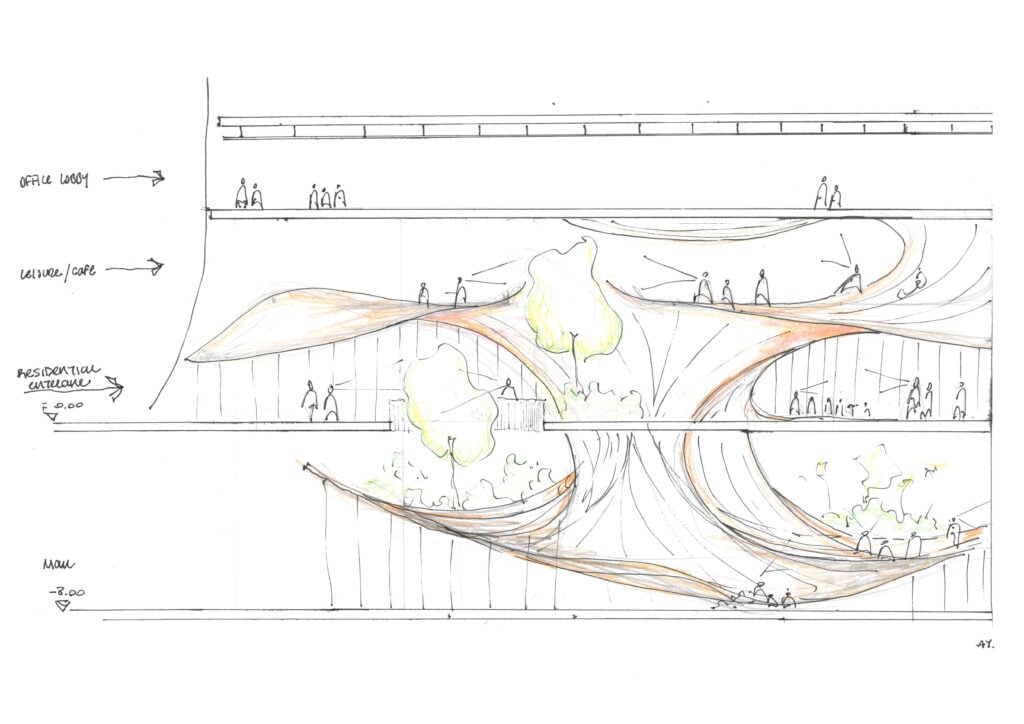Reflecting on your journey at RMJM so far, what have been the most rewarding aspects of your experience?
What I really enjoy at RMJM is being a part of the early conceptual design phase, starting from day one. I really value this because it means you’re not just executing tasks, you’re actually contributing to the creative core of the design. That kind of trust motivates me a lot. I’ve always been passionate about creating spaces that can become part of people’s daily lives, and here I’ve had the opportunity to do just that. We’re not just drawing, we’re shaping something meaningful.
What does a typical day in your role at RMJM look like, and how do you stay energized throughout your projects?
Most days start with a good espresso, one of the perks of working in Italy! I check my calendar and coordinate with teammates on my current project. If we’re starting something new, I dive into research and references. If it’s an ongoing project, I spend most of my time drawing and sketching. I really enjoy lunch breaks with my colleagues, we often talk about each other’s projects and I learn a lot that way. Afternoons usually bring review sessions, which are super valuable for growth. So, my days are a nice mix of productivity, inspiration, and connection.
How do you inject your personal style or design philosophy into the projects you work on?
I think one of the biggest challenges when working in a large, international office is finding the balance between your own voice and the company’s design language. That’s why understanding the brief and the client’s expectations is key. Once I feel aligned with the essence of a project, I start weaving in my own perspective, whether it’s through form, spatial quality, or representation. For me, it’s about merging creativity with context and contributing to the collective vision while still leaving a personal mark.
How do you stay creative when dealing with tight deadlines or technical constraints?
I actually think constraints are the backbone of design. They push you to think smarter and find solutions you wouldn’t have considered otherwise. I really enjoy that problem-solving part of architecture, it keeps things dynamic. And working with inspiring people turns those challenges into learning moments. Also, I love to sketch. It’s quick, expressive, and helps me test ideas fast. Especially under pressure, putting pen to paper clears my mind and helps me stay creative.
What are some unexpected skills or experiences that have proven helpful in your architectural work?
One skill that has unexpectedly helped me a lot is hand sketching. In a digital-heavy workflow, I’ve found that drawing by hand helps me think quickly and communicate clearly, whether I’m brainstorming, explaining an idea to a teammate, or presenting to a client. It’s simple, but powerful. It also brings a certain spontaneity to the process, sometimes the best ideas come out in just a few loose lines.
What does architecture mean to you personally and how has that meaning evolved since joining RMJM?
For me, architecture is about creating spaces that make people feel something connected, curious, comfortable. It’s not just about the object but the experience. Since joining RMJM, I’ve started thinking more globally, understanding how different contexts shape design decisions. I’ve also learned to navigate complexity by working across scales, timelines, and teams, while still holding onto that core intention: to create spaces that matter.


